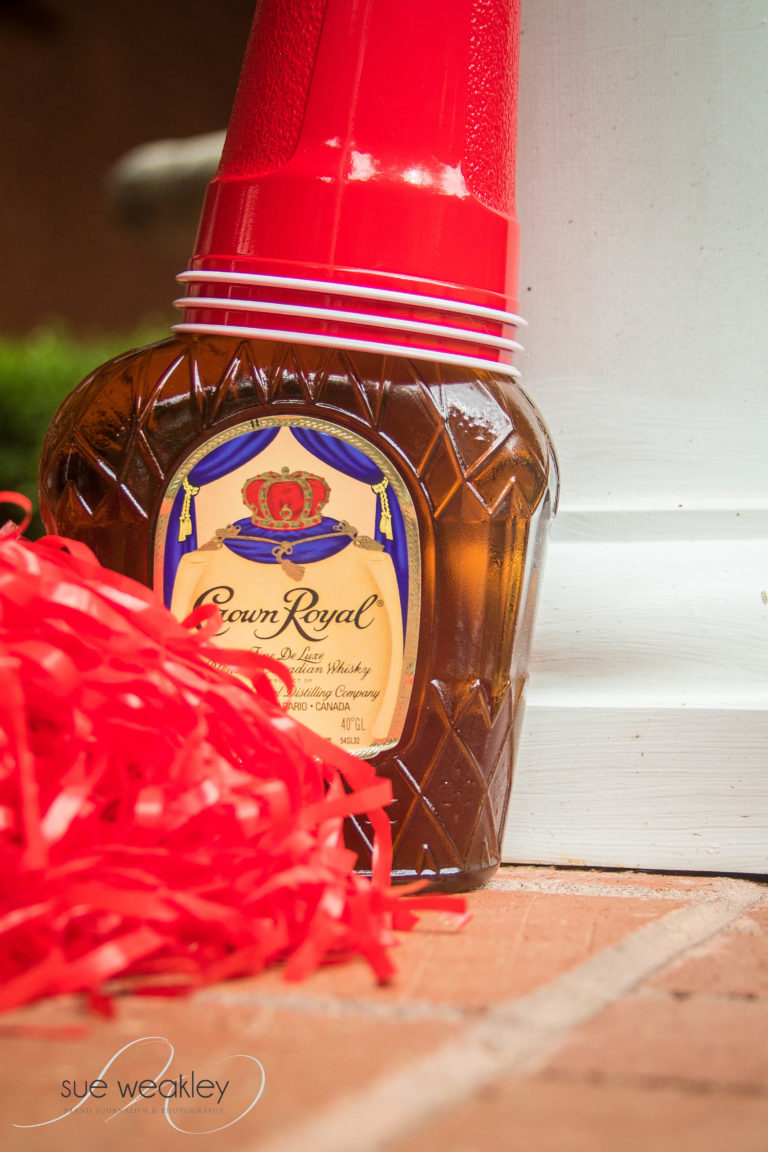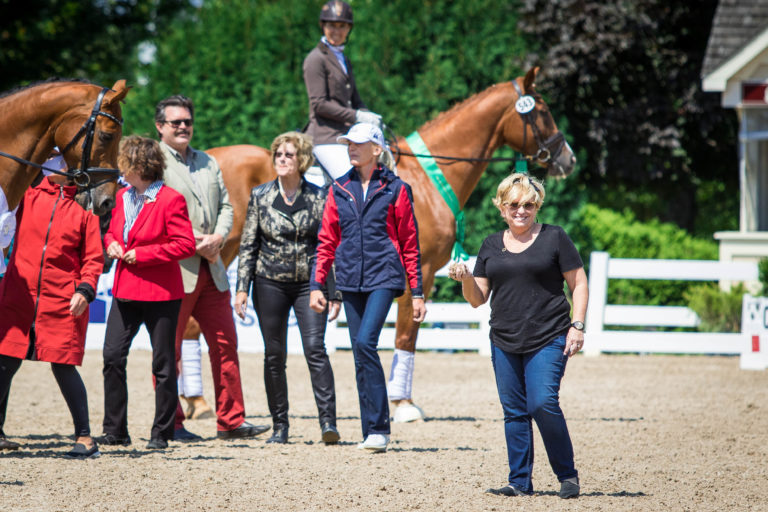Traditional Dressage Rider Goes West to Win at Western Dressage
by Sue Weakley
Cynthia Collins has been firmly entrenched in the world of traditional dressage. In fact, more than one freestyle champion at the November U.S. Dressage Finals in Lexington, Kentucky mentioned her name and the name of her freestyle design company, Luna Tunes Freestyles, as the winning freestyle designer. But recently, she’s gone over to the other side of dressage − Western dressage, and she’s winning. And she’s not alone.
After getting tossed off her Trakehner gelding and breaking a femur, Collins of Victorville, California, had some fear issues and she stopped riding. On top of that, she wasn’t pleased with the way traditional dressage was headed.
“When I started dressage there was a big controversy over the French method of dressage versus the German method,” she said. “Dressage has gone the German method.”
Then, she learned about Western dressage and thought that its tenets and philosophy coincided with her training in the classical French style. The goal of Western dressage is to create a supple, responsive and balanced horse. Horses are expected to travel with lighter contact than is used in traditional dressage and the purpose of Western dressage to increase communication between horse and rider.
“Western dressage, to me, is how dressage was 10,15, 20 years ago, when your horse is freely moving forward but you’re not driving,” she said. “If you go over to Western dressage, they say, ‘Oh look how relaxed your horse is. It’s moving freely.’ And you are rewarded.”
Collins said that the biggest difference is that harmony is more prized in Western Dressage. There are five divisions in the sport: Introductory, Basic, Level 1, Level 2 and Level 3 and in the tests, harmony is key. In fact, at Basic Level, harmony has a coefficient of five and, at Level 1, the coefficient for harmony is six.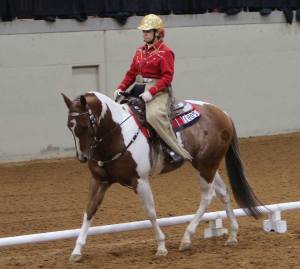
“So, basically it’s how harmonious you are,” she said. “If you don’t have your harmony score up, you can’t do well.”
Collins was intrigued, so she leased a Paint mare to give it a try.
“I took her all the way to World [the Western Dressage Association of American Western Dressage World Championship Show] but she was not particularly talented,” she said. “It was nice to take her out and get a feel for it. Soon, I was looking for one of my own that had a little more talent.”
She found a prospect on Facebook that seemed promising. The owners had tried her in a variety of disciplines including cutting, roping and barrel racing, but the mare didn’t like any of them. Then, they put a dressage saddle on her, took her to a rated dressage show and she earned a 70 percent.
“At this point in time, there is no place you can go to buy a Western dressage horses,” Collins said. “I trained with Hilda Gurney for 10 years and Hilda said, ‘You start with your gait scores.’ So that’s what I looked for.”
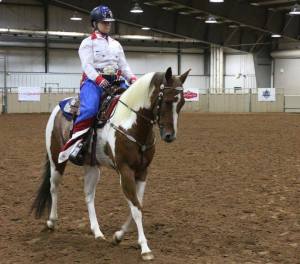 Collins contacted the owners of a 3-year-old Paint mare named I’ll Be a Scarlet Moon, and asked if she could get a video of her. The owners were at a show, so they demonstrated the rider mounting right outside the stall and coolly ambling over to the arena, while Warmbloods in the background were having meltdowns. Collins decided to go try the mare and, because of her fear issues, she was reluctant to canter, but she tried it and when she came back around to the owner, Scarlet had a new mom.
Collins contacted the owners of a 3-year-old Paint mare named I’ll Be a Scarlet Moon, and asked if she could get a video of her. The owners were at a show, so they demonstrated the rider mounting right outside the stall and coolly ambling over to the arena, while Warmbloods in the background were having meltdowns. Collins decided to go try the mare and, because of her fear issues, she was reluctant to canter, but she tried it and when she came back around to the owner, Scarlet had a new mom.
“She goes very forward but I want her to go as a team going forward,” she said of the mare. “I want to have a partnership with my horse. I only ride mares and a lot of people don’t like mares. Again, I feel that once you have a partnership, those mares will do anything for you but you have to have to trust you and you trust them and you don’t demand that they do something. They WANT to do something. It’s a really special partnership I have with her.”
The partnership is so strong that Collins and Scarlet earned a belt buckle for the highest points in Basic Level for an amateur, a 76.3945, and placed second in the Basic Level Freestyle with a 73.38 at the WDAA Western Dressage World Championship Show Nov. 6-8 in Tulsa, Oklahoma. Next year, they will move up a level.
“Western dressage is growing in leaps and bounds,” she said “And they are very welcoming in the sport. At World, we saw some Canadian friends we met last year. We met riders from Michigan, Ohio, Oregon, Washington, Florida and Texas. I think there were seven from California. And the nice thing is we are open to all breeds. As far as what you wear, I saw this older guy and I swear he just got off the ranch with his working saddle and his plaid shirt and his jeans. He had a nice ride! Then, I saw an Arab there who was blinged to the hilt. You needed sunglasses! Basically, it’s pretty much open − you can wear jeans, you can wear chaps, you can wear chinks.”
Not only are the apparel requirements more relaxed than in traditional dressage with its white breeches, tall boots and tailored coat, but tack requirements are also more relaxed. Aside from riding in a Western saddle, the choices of bridles and bits are more varied and Western dressage horses can be seen in everything from a bitless bridle to a curb.
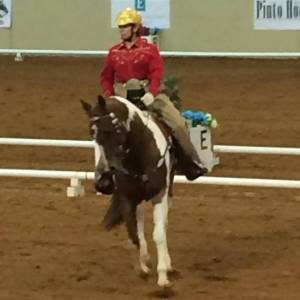 As far as the tests, they have required patterns and movements at every skill level. They use licensed dressage judges and some are being fast tracked to obtain their Western dressage judging license as quickly as possible. Happily for Collins, each level has a freestyle component and she has created freestyle choreography and music for many Western dressage riders.
As far as the tests, they have required patterns and movements at every skill level. They use licensed dressage judges and some are being fast tracked to obtain their Western dressage judging license as quickly as possible. Happily for Collins, each level has a freestyle component and she has created freestyle choreography and music for many Western dressage riders.
The first year of the World Championships just three year ago, they had one arena working for the competition. At the 2015 World Championships, there were four arenas running non-stop and the classes were maxed out with 50-100 people on the waiting list.
“It’s just exploded and the main people who are coming over are older ladies who have their horses they like, but they’re not fancy,” Collins said. “They are tired of push, push, push, drive, drive, drive.”
Collins said that Western dressage riders who have transitioned from traditional dressage tend to excel and she has told people that they can come over and win. In the tests, movements like leg yield, shoulder-in, haunches in and half-pass are included. In the canter, everything is done in a 20-meter circle, although at the highest levels, the horse and rider pair must transition from a lengthened gait to a more collected one on a 20-meter circle. A flying change is not included in any of the tests, but there is some push to create a fourth level to include a change.
She said the lure of Western dressage is that people, especially adult amateurs, can come over and have fun immediately. They don’t need the fanciest Warmbloods or the biggest movers.
“Some people think it’s like Western pleasure, but if you peanut roll you’re going to get your butt handed to you because that’s not what it is,” she stressed. “It’s freely. Moving. Forward. Freely is the key word. So, you have a relaxed horse and she freely moves and she can do what she wants to do and what she can do. It’s a completely different thought process.”
Comfortable with the change in thinking, Collins intends to spread the news that Western dressage is a refreshingly different way to enjoy training, showing and enjoying your horse.
“I tell people all the time, they need to try it,” she said. “They get to wear chaps. They get to wear bling. They get to wear all kinds of colors. I tell them they can wear pink cowboys boots! The difference is that it promotes a relaxed, supple horse, it’s fun and there’s a great group of people out there doing Western dressage. That just makes sense to me.”

